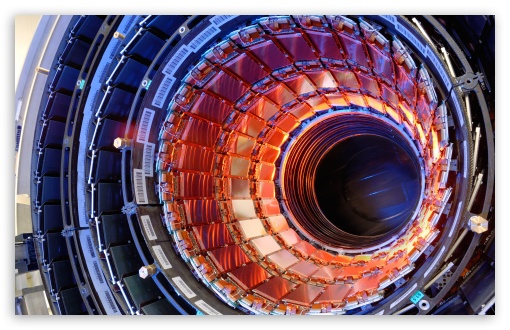2 hours preparation | 5-10 minutes presentation
Title page
Title page
The foundation of any good financial plan is A) examining net worth through a balance sheet and B) examining the ability to build upon net worth via a cash flow statement
Balance sheet
- Assets: Cash (in the bank, money market accounts, or CDs), All investments (mutual funds, college savings accounts, individual securities), Home value (the resale value of your home), Automobile value (the resale value of your car), Personal Property Value (resale value of jewelry, household items, etc), Other assets
- Liabilities: Remaining mortgage balance, Car loans, Student loans, Any other personal loans, Credit card balances
- Salary
- AGI (Total Adjusted Gross Income)
- Taxable Income
- After Tax Cash Flow
Goals:
- Contribute retirement up to match
- Pay off high interest debt
- Any additional saving for retirement
- Saving for college
- Reduce spending
- Increase saving
- Refinance Debt
BRUCE NOTES
Stock market: average 7% returns
Rest save for college or retirement/kids
College: if low income, coverdell educational ira -Coverdell ESAs allow money to grow tax deferred and proceeds to be withdrawn tax free for qualified education expenses at a qualified institution below 30 years old
Medium income: American opportunity credit (tax credit for college)
High income: 529 plan for retirement – no tax credit for money put in, but all money used tax-free when grown and used for college
Don’t want to reserve enough money to pay for entire college education
If put too much money, too much money in 529 (not gonna be used) and penalty to take out
Roth IRA: put money in after tax, grows tax deductible forever
Income limitations
If people have a job, match into retirement plan (401k, if nonprofit 403V, all the flavors have same rule and companies offer match
Even if have debt, always recommend put in money up to company’s match (free return immediately)
All financial planning built on cash flow and balance sheet
Build balance sheet (net worth) first, then build cash flow statement (ability to build net worth); determine positive or negative cash flow
If positive, then opportunity to build balance sheet
If negative, need to address (refinance debt, lower high expenses, i.e. high car payments – smaller car)
Need to get to positive cash flow
Then address issues
College, retirement always more important than saving for college
College can always be financed, retirement cannot so wanna take care of
Need to take care of high interest debt (>7%) first besides match
Only healthy debt is mortgage, student loans (tax deductible), even high ones can be consolidated to lower ones to below 5% and then build other areas of balance sheets
Analyze health: balance sheet and cash flow
Recommendations to improve cash flow and clean up balance sheet
Only goals are retirement, college, paying down debt
Assume have match ~ 3%
Basic rule of 401k: safe harbor – guarantee level of match, allows highly paid people to max out 401k (protection for lower people)
Can’t discriminate vs poorer people
In order for rich people to max out, need poor people to match (3-4%)
Contribute retirement up to match
Pay off high interest debt
Any additional saving for retirement
Saving for college
If negative cash flow, preliminary recommendations
Salaries; assumption for federal, state taxes, income taxes, add in deduction (standard deduction), exemption for each member of family ~$200,000 / year full exemption and deduction; take salary and deduct out what contributing to 401k and deductions (if $100,000, contribute $3000/yr to 401k, at $97000, another $6000, deduct stuff) taxable income ~$81,000 and get adjuncted growth income; federal and state income taxes come off as, deduct expenses,
Search for standard deduction and exemption?
2017 tax exemptions
Deduct per person from taxable income ($4000 per person? X 4 = $16000)
Tax write off for mortgages, property taxes
Categories of things that can itemized
Safe to assume 3%, stress test at 4% inflation
If were to average 4%
30 yr mortgage 4%
2007: money market account was paying 5.5% and now could refinance 4%
Capital market assumptions
Around 7-9% return on money higher for younger, lower for older and will outweigh mortgage payments
Recommendation for money
ETF,
If young, more aggressive 80% stocks, 20% bonds 20 (100% stocks), 30 (90% stocks) 60 (60, 40) (look up average returns for this portfolio)
Domestic stocks (S&P 500), European stocks SPY index, emerging markets (EPM?), EFA (global developed European markets), Russell 2000
Hypothetical: 80% 20% of 80%, 60% in S&P 500, 10% in Russell, 20% in Europe, rest in emerging markets and small cap
Maintain ratio from 80% to 70% (i.e. always 5% in emerging, 5% in Russell, 5% in EFA)
Then 70%, 30%, later 60%, 40% and no lower
Charge planning fee?????
Slide – foundation of any good financial plan is A) balance sheet, B) cash flow
Next two slides show them
More important to show individual year
Current cash flow more important
Leverage to pull: goal to retire by __ age. Work longer, save more, spending less (in retirement too)
Riskiness of portfolio
Not much control over: market returns, house, live to 80-95? Die earlier


